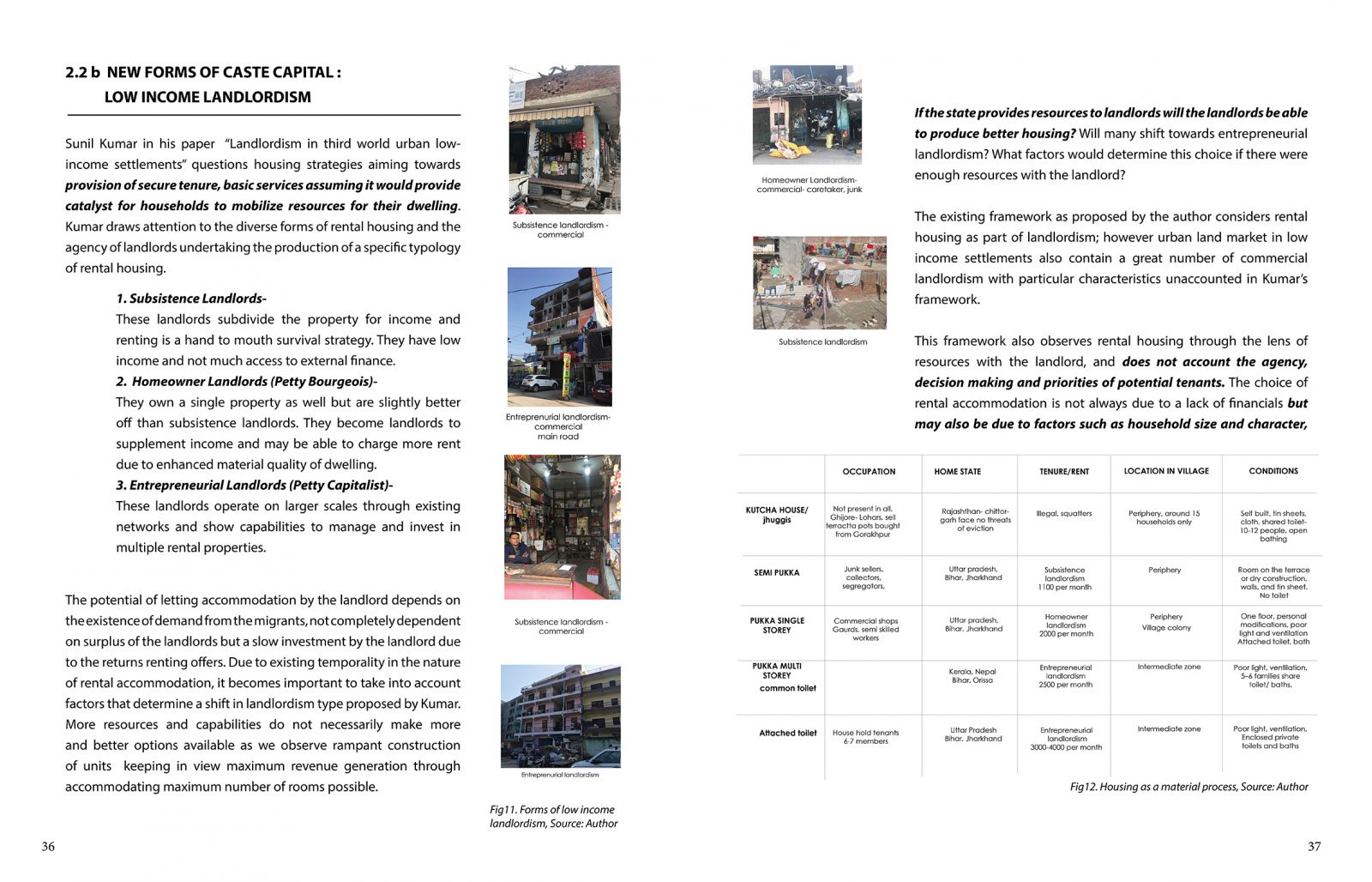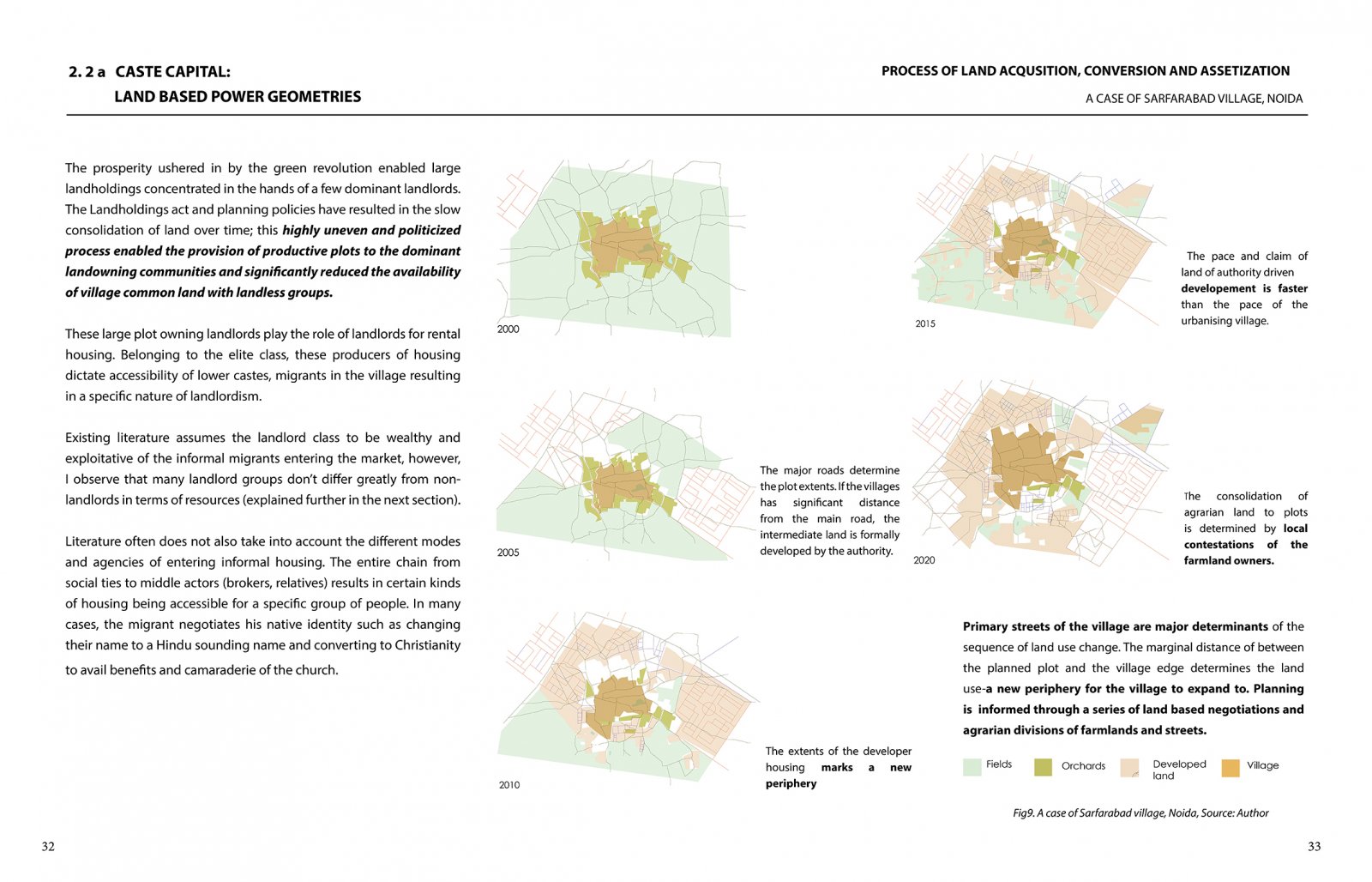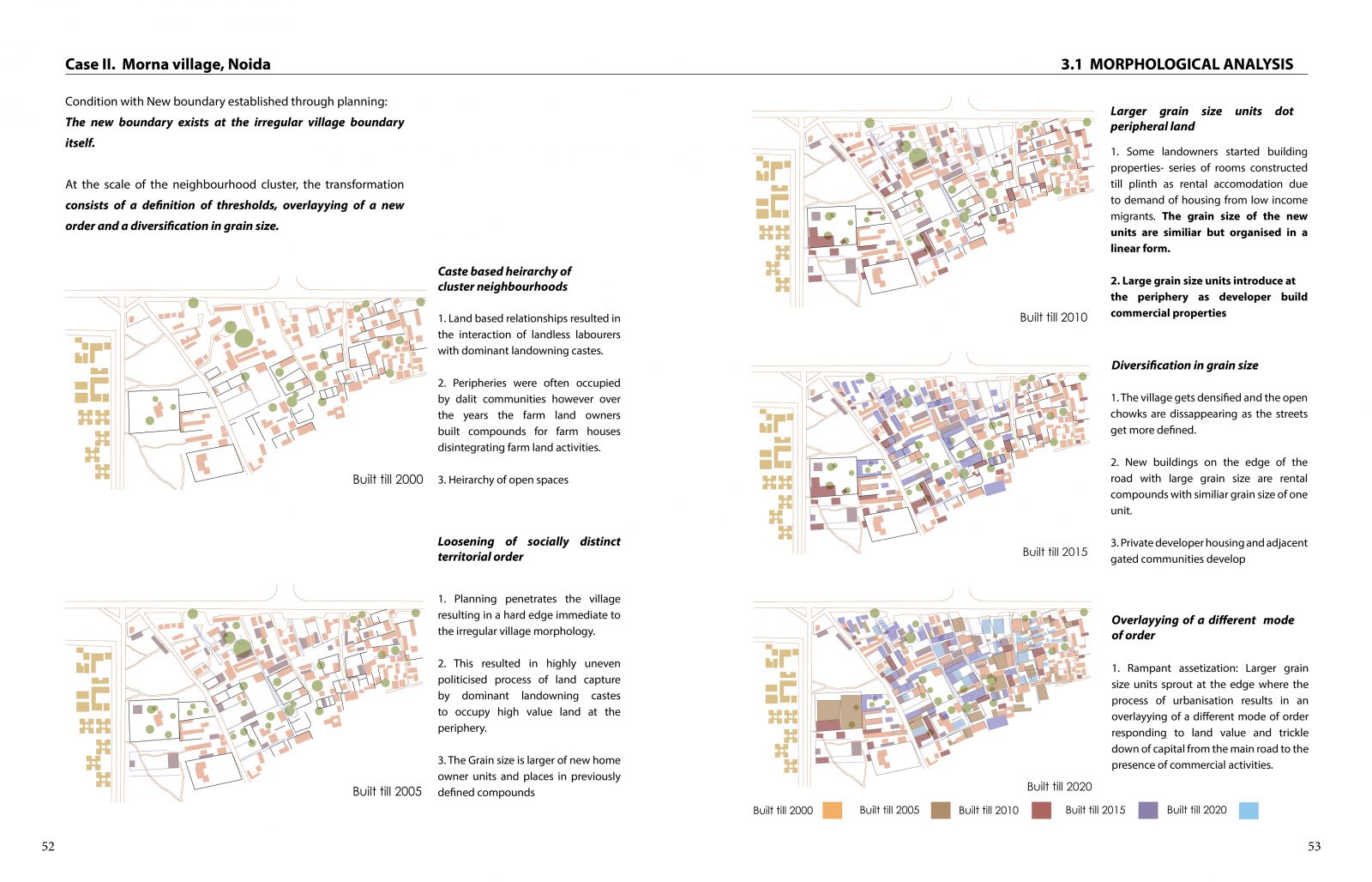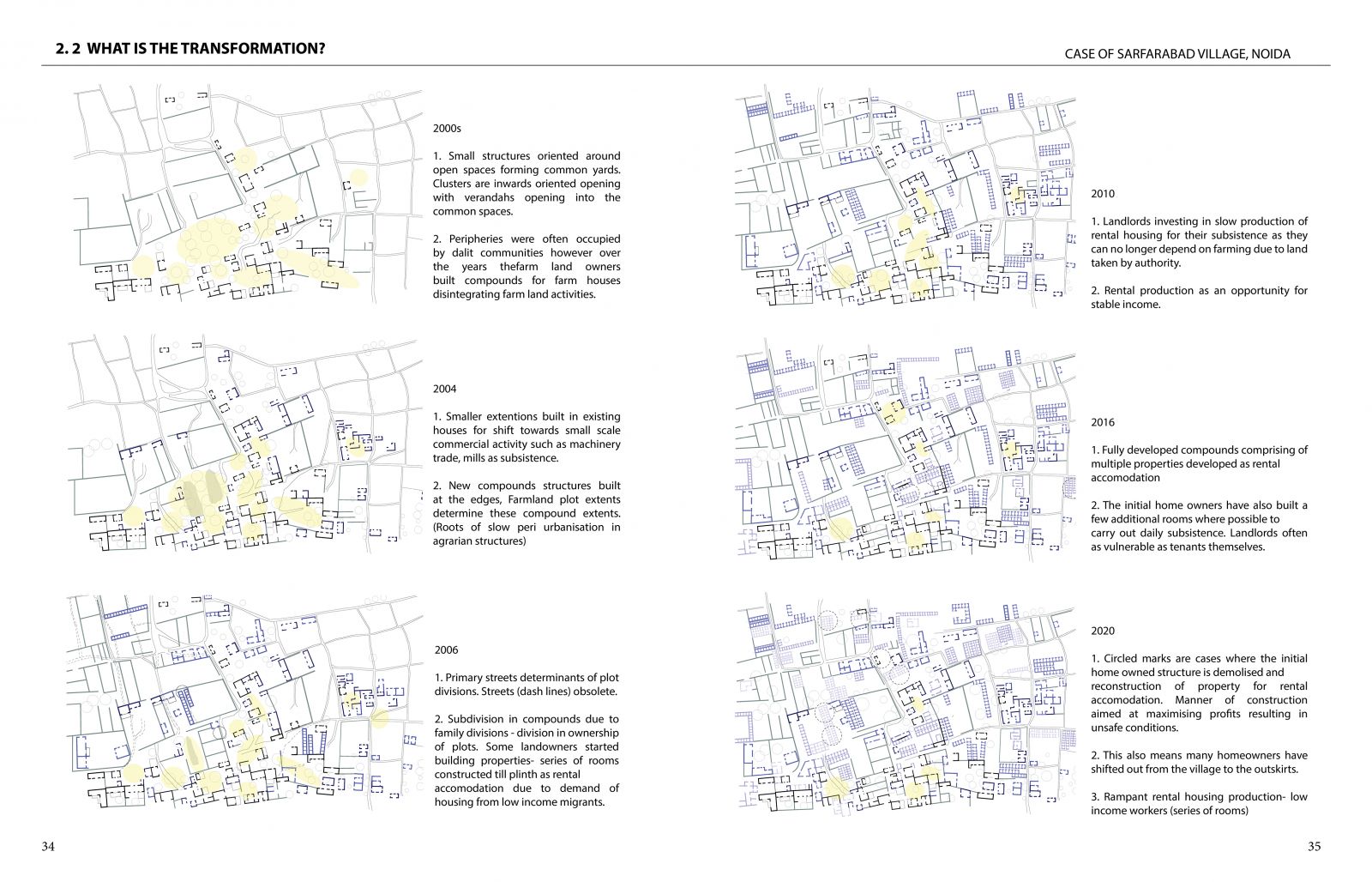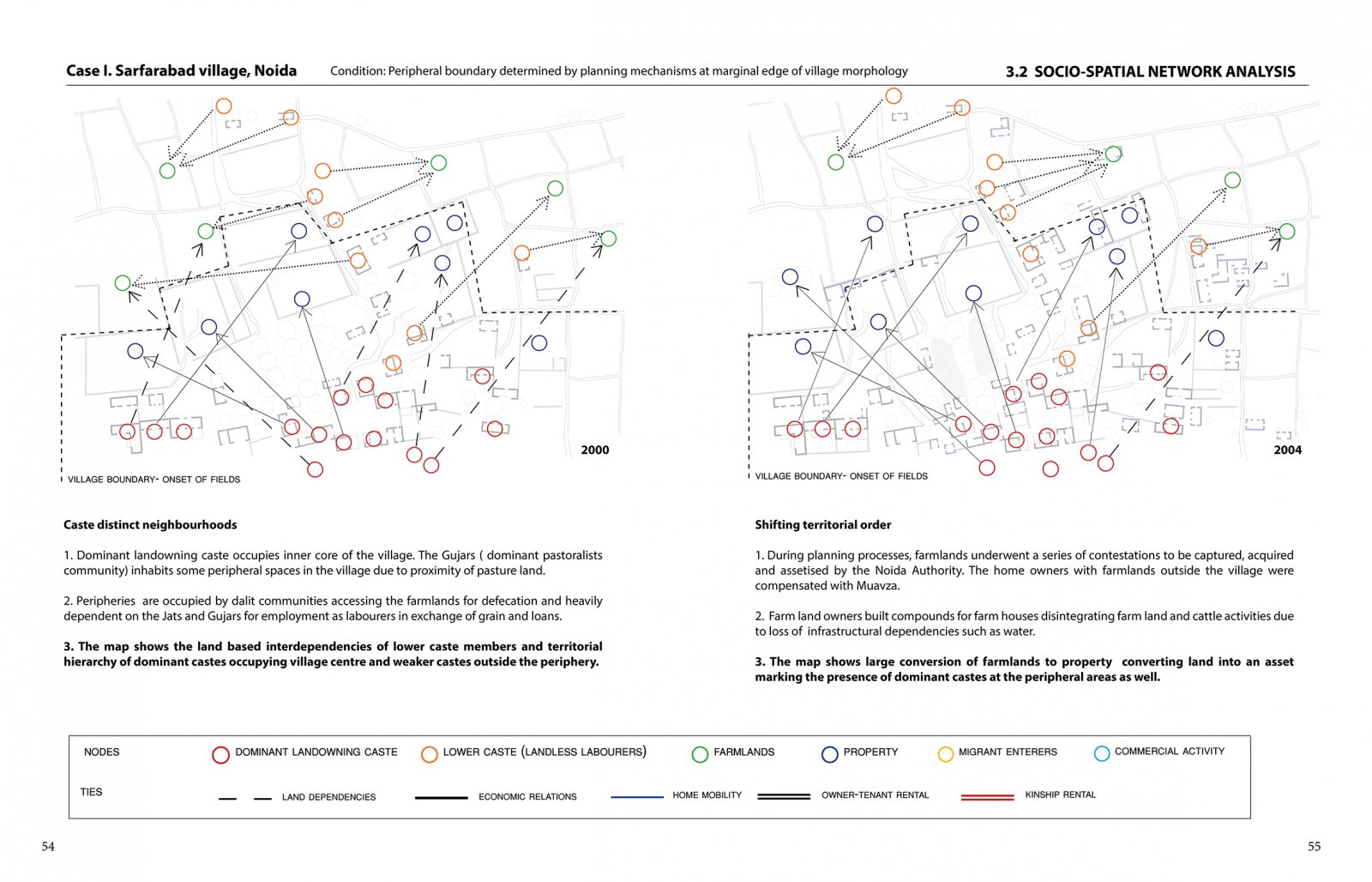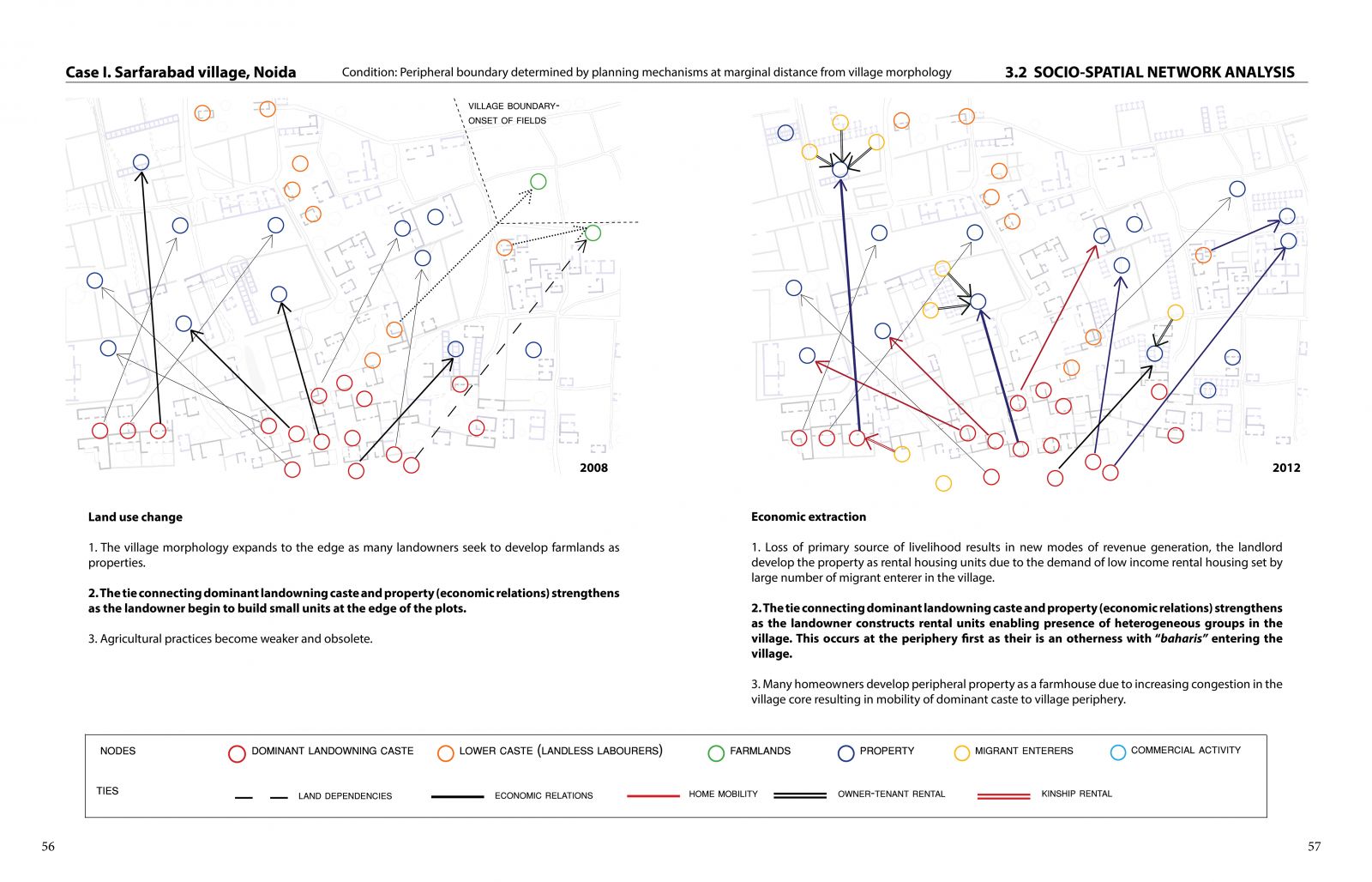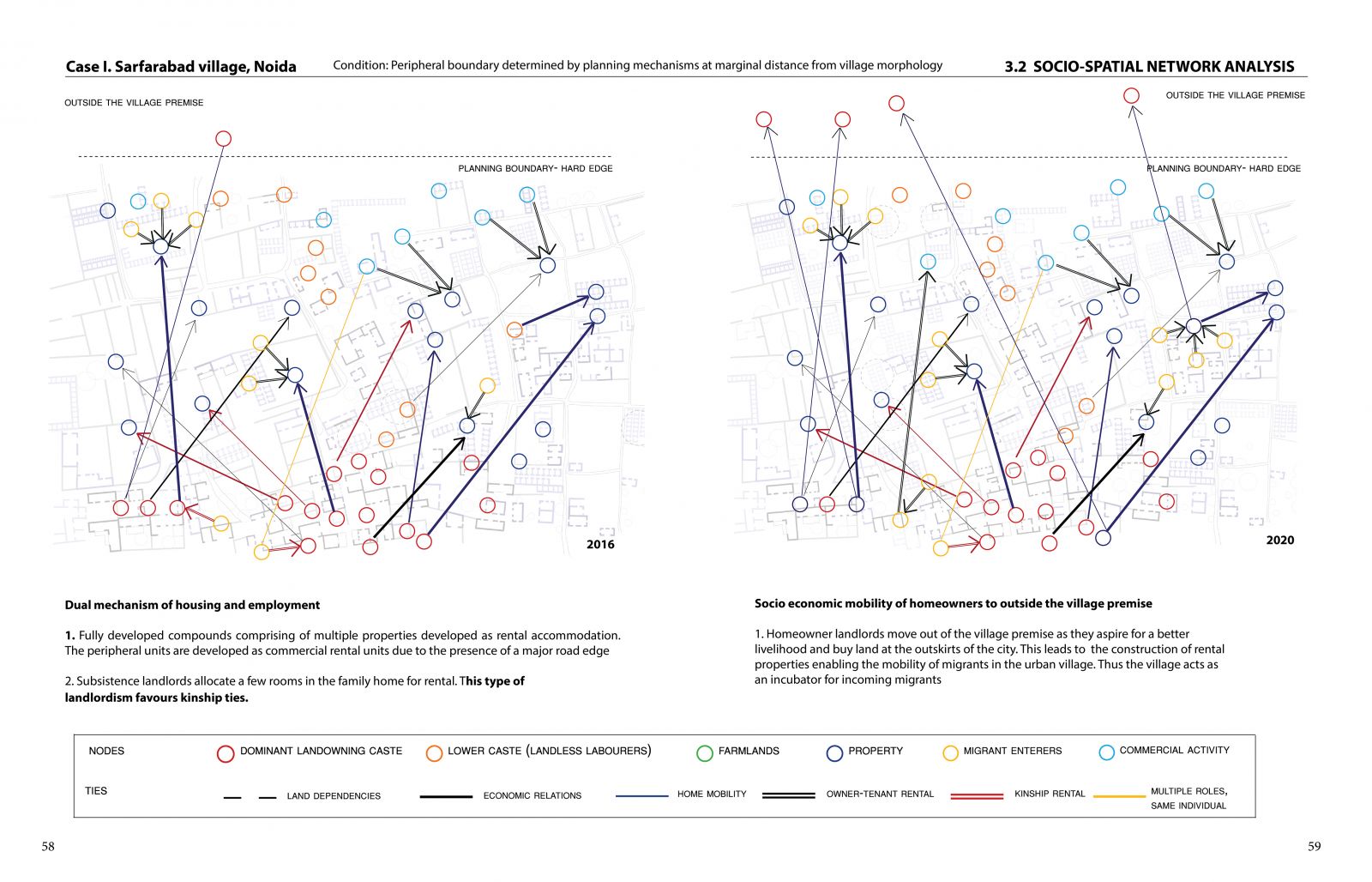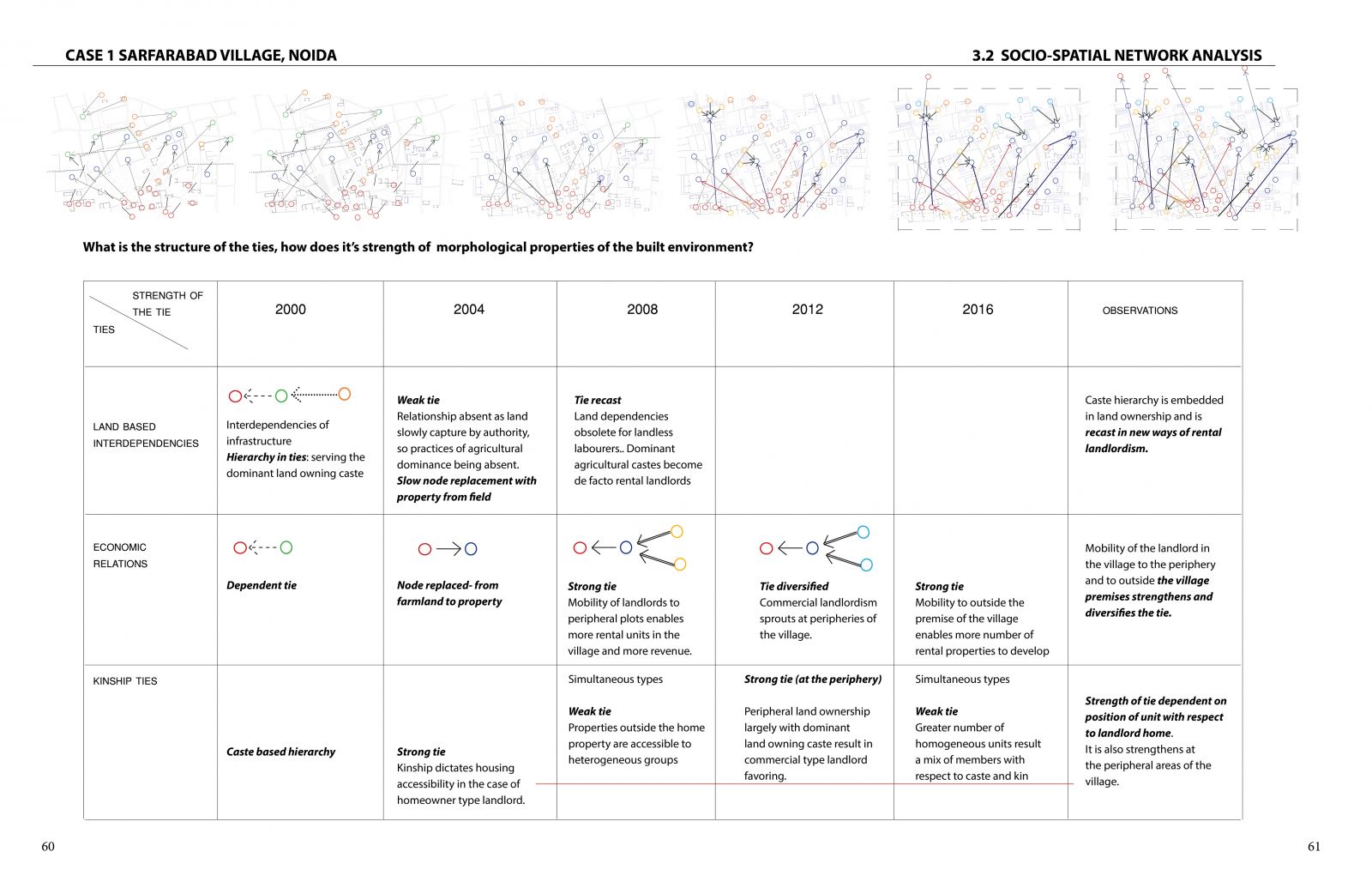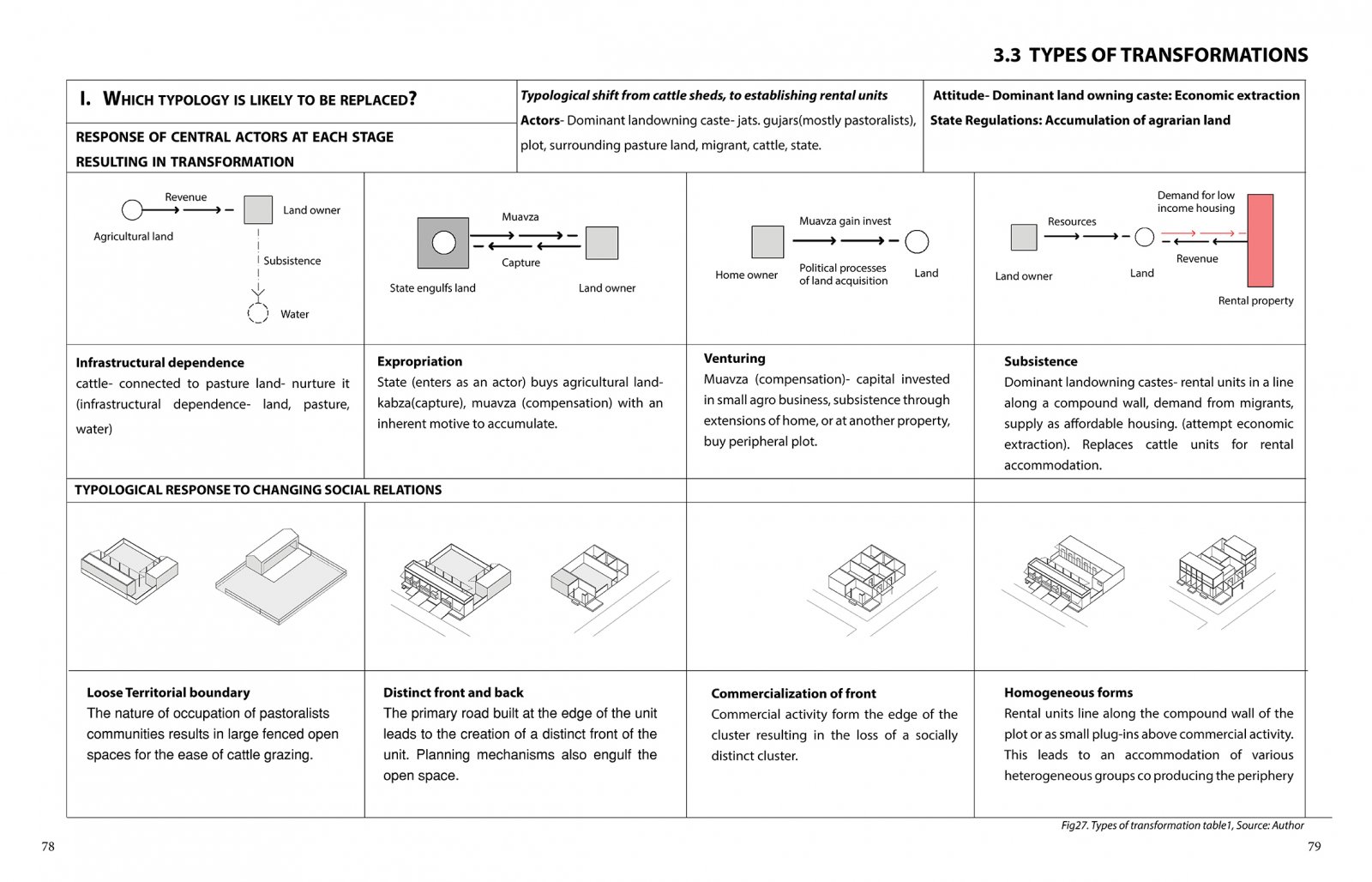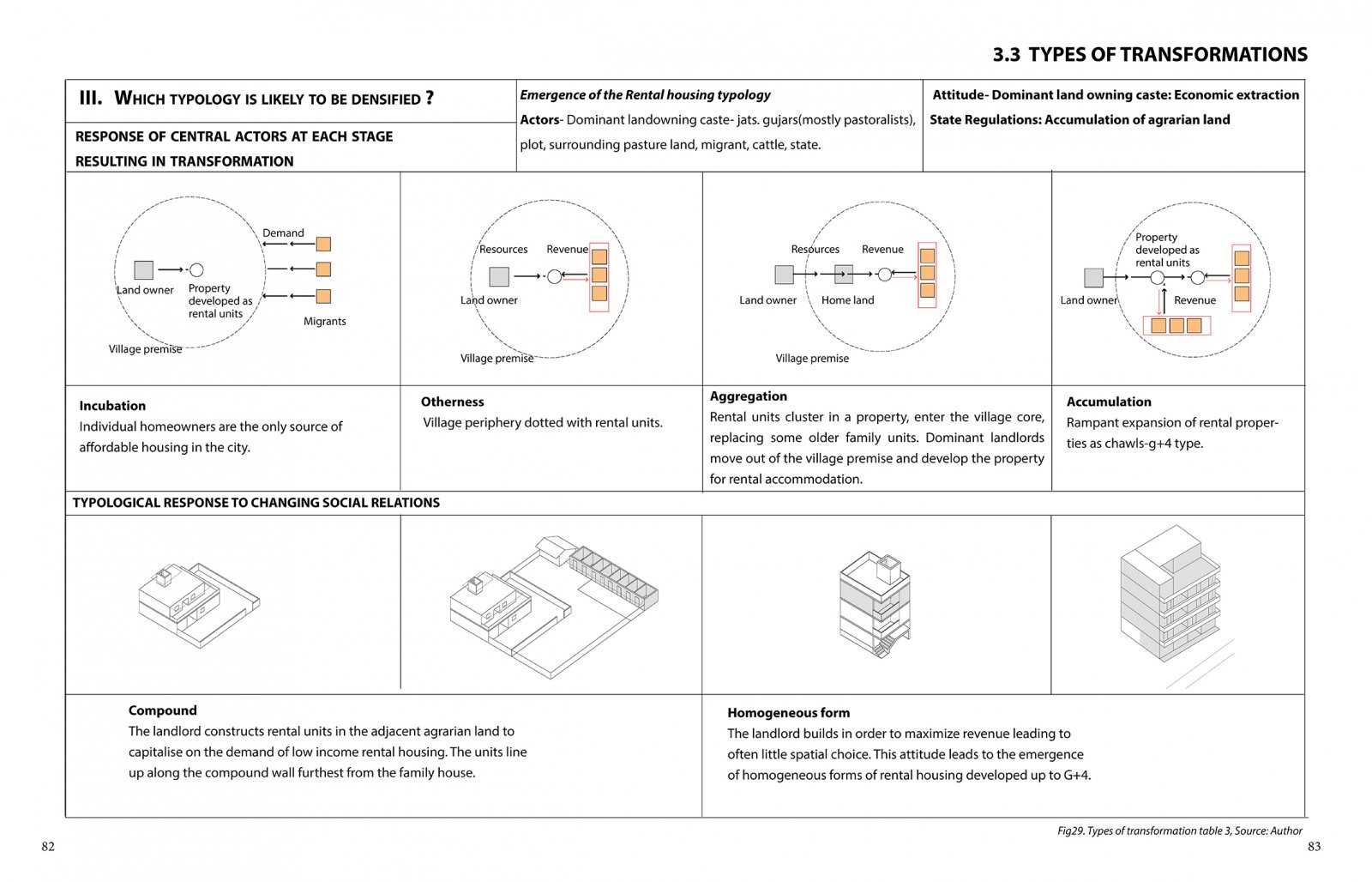Your browser is out-of-date!
For a richer surfing experience on our website, please update your browser. Update my browser now!
For a richer surfing experience on our website, please update your browser. Update my browser now!
Amidst rapid peripheral urbanisation in India, the research attempts to decode the response of urban villages undergoing socio-economic transformations within the constraints of caste relations and state regulations. The analysis aims to arrive at a codified manifestation of the sequence, processes and actions of actors coping with urbanisation in the village. Through the process of transformation, it places emphasis on the relationships of land and social stratification which remain at the heart of urban transformation. The thesis provides an ethnographic account of the spatial and social co-production of Indian urban villages. While dominant discourse on urban transformation focuses on the urban at large, recent scholarship explores methods to deconstruct regional trajectories of urbanisation. “Engaging the urban from the periphery'' (Samaj, 2021) and “New forms of agrarian urbanism”(IIHS, 2021), both published in 2021 detail variations of production of spaces and a slow unfolding of urbanisation which engages with official logics and state operations in distinct ways. The research works in conversation with these authors through it’s application in urban villages in Noida. What has been my contribution? I situate the open model of peripheral urbanisation in the context of stressed urban villages in Noida in the attempt to trace causation of typological and morphological responses driven by changing socio-economic relationships. The research engages with socio-spatial categories to identify the types and natures of transformations.
